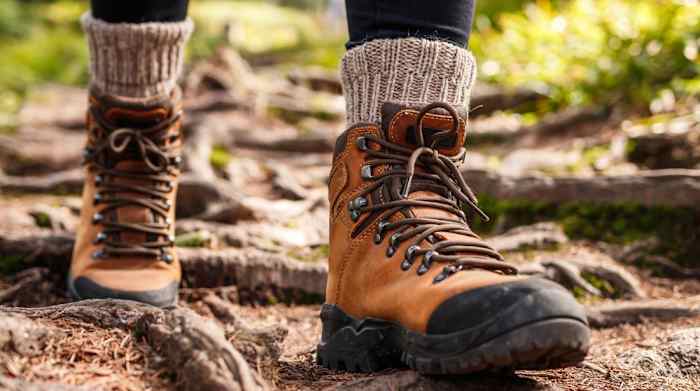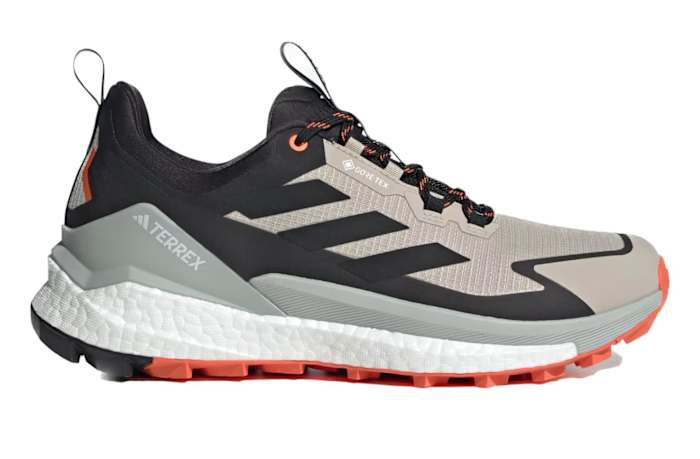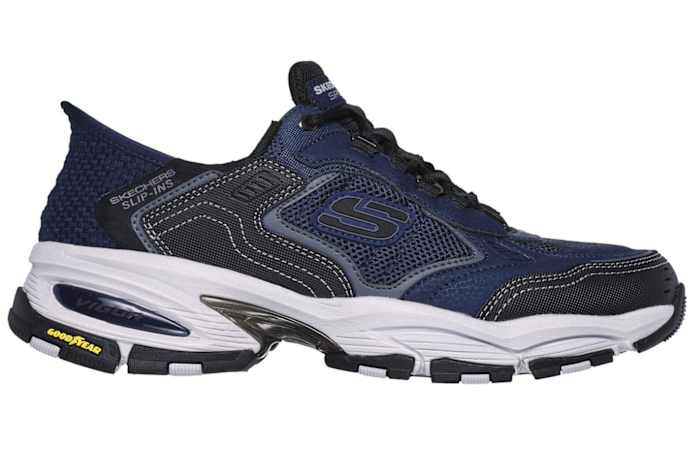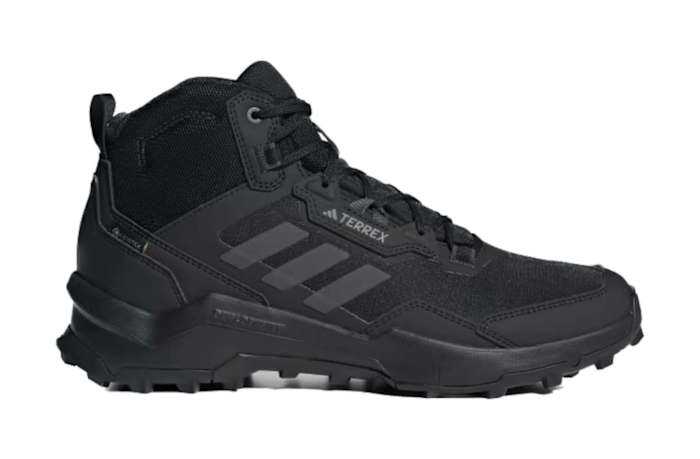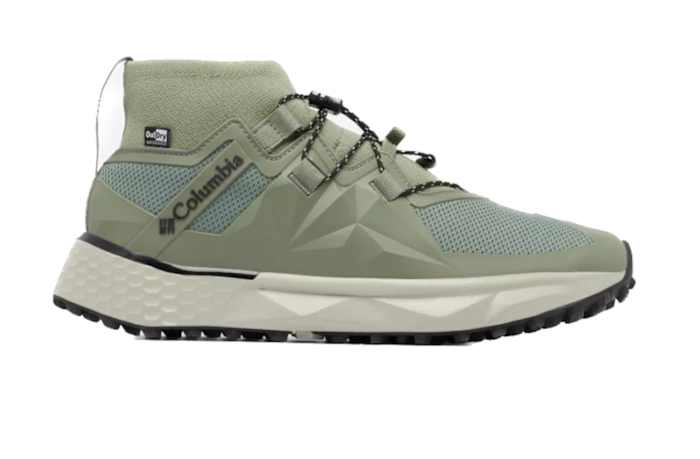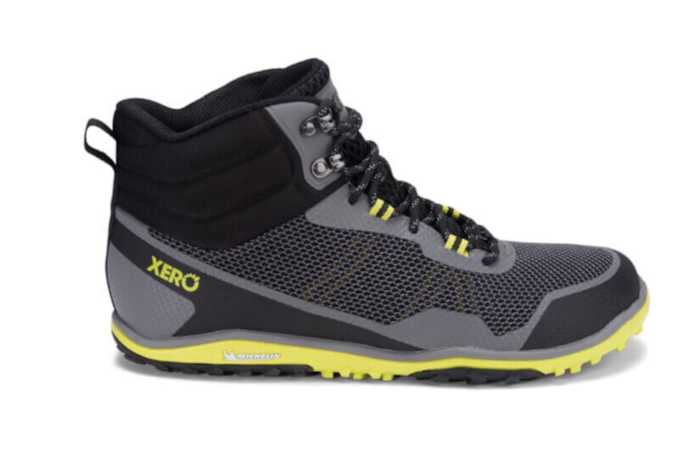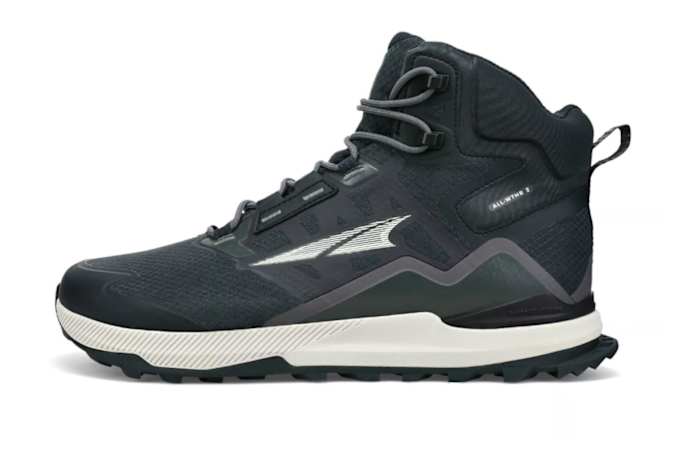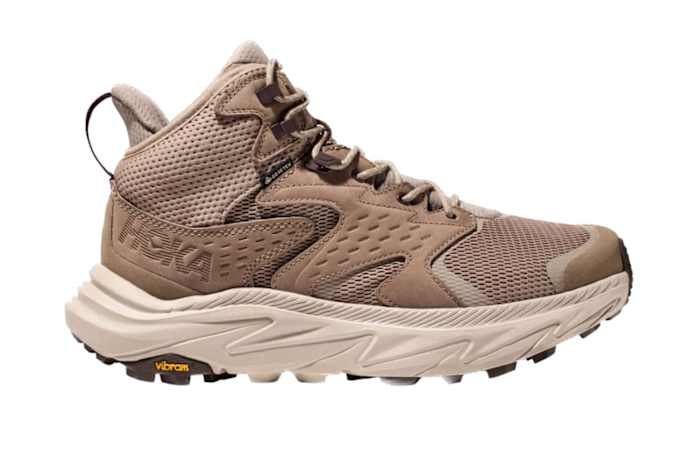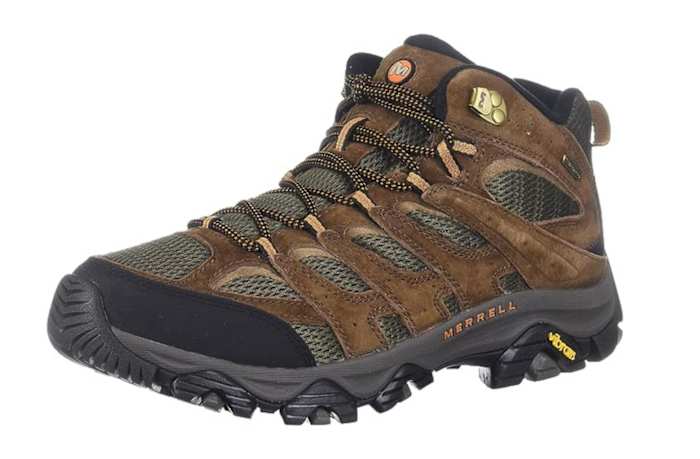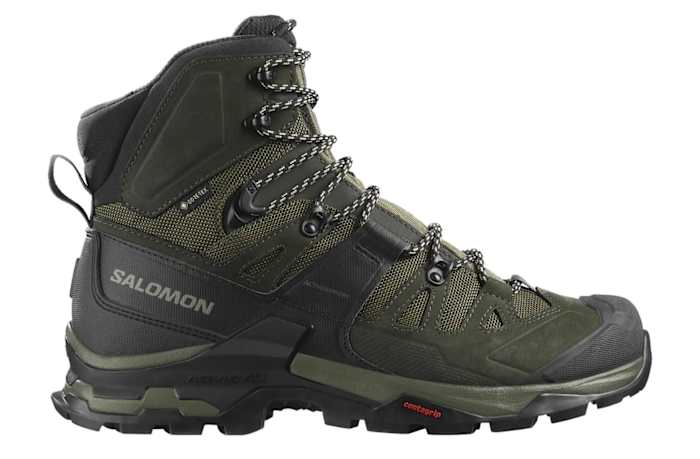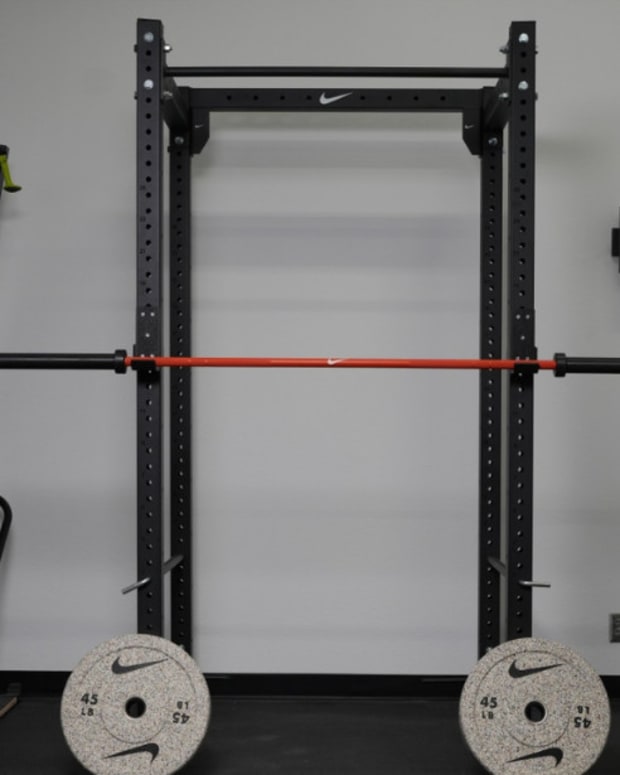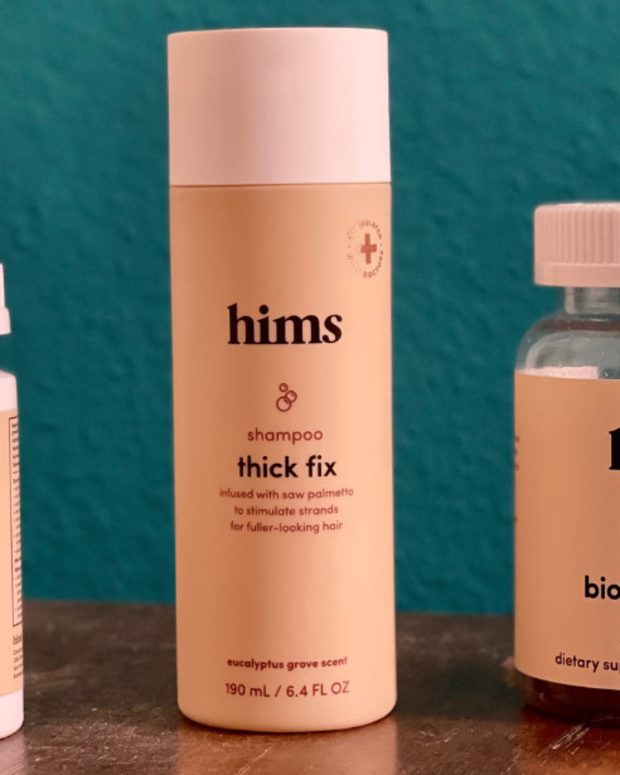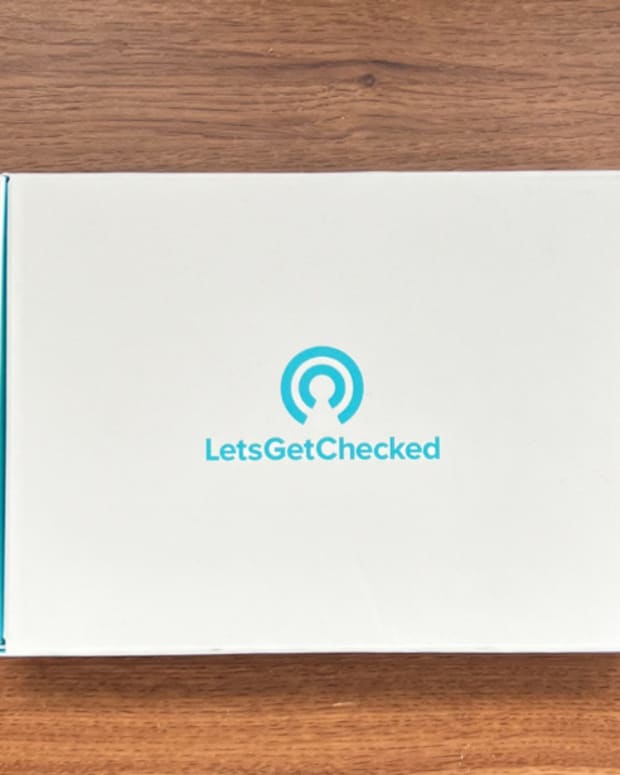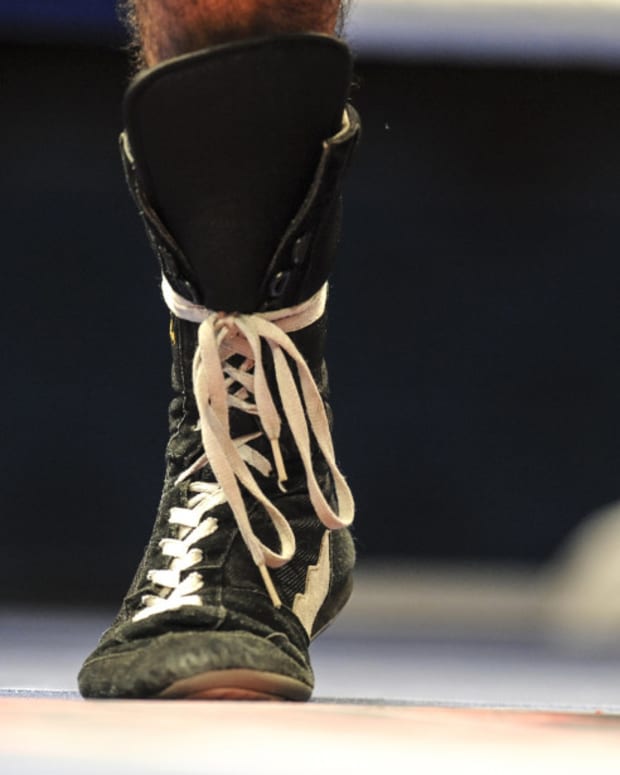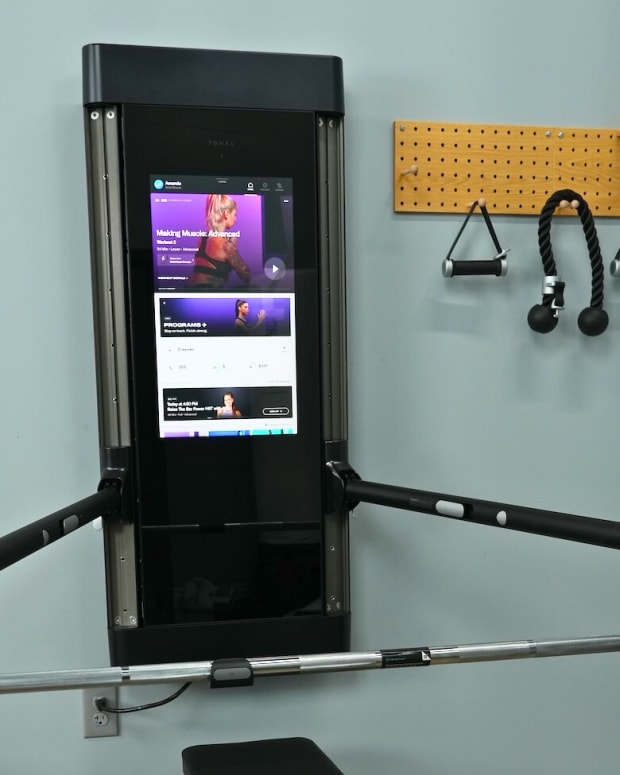The products featured in this article have been independently reviewed. When you buy something through the retail links on this page, we may earn commission at no cost to you, the reader. Sports Illustrated editorial staff are not involved in the creation of this content. Learn more here.
As fall approaches, so does peak hiking season. With that comes time to take a look at your gear from hiking backpacks to hiking sandals to hiking socks—and most important of all, your hiking boots. Whether you are new to hiking or just looking to refresh your gear, a proper hiking shoe can make or break your time on the trails. And while there are a ton of boots out there to choose from, they are not all made the same.
To help you find the boot that will be best for you, we gathered up our favorites that span a range of designs, styles, materials and fits. We chose options that range from a traditional leather boot, to a trail-running-inspired lightweight shoe. Options that are highly breathable, and those insulated for the coldest winter temps. We have boots that are affordable, and some with the most high-tech materials available today (that come with a high price tag). And of course, we included the best hiking shoes for men and hiking shoes for women.
We conducted in-depth reviews of each of these boots and highlighted all of the most important features. We also included information on what to look for and how to choose the right pair of hiking boots for you.
Our Picks for the Best Hiking Boots:
- Best Rated Hiking Boots: adidas Terrex Free Hiker 2.0 Low Gore-Tex
- Best Hiking Boots for Plantar Fasciitis: Skechers Hands Free Slip-Ins: Vigor 3.0
- Best Waterproof Hiking Boots: adidas Terrex AX4 Mid Gore-Tex Hiking Shoes
- Best Durable Hiking Boots: Columbia 75 Alpha OutDry Shoe
- Best Lightweight Hiking Boots: Xero Scrambler Mid
- Best Hiking Boots For Wide Feet: Altra Lone Peak All-Wthr Mid 2
- Best Leather Hiking Boots: Hoka Anacapa 2 Mid GTX
- Best Winter Hiking Boots: Keen Revel IV Polar Boot
- Best Budget Hiking Boots: Merrell Moab 3 Mid Waterproof Hiking Boot
- Best Ankle Support Hiking Boots: Salomon Quest 4 Gore-Tex
Best Rated Hiking Boots: adidas Terrex Free Hiker 2.0 Low Gore-Tex
Key Features & Specs:
- Gore-tex membrane
- Mesh upper
- EVAframe
- Boot Midsole
These boots are innovative—a trail shoe and hiking boot in one. The adidas Terrex Free Hiker 2.0 Low Gore-Tex are breathable, lightweight and comfortable—and also more than capable of taking on the toughest trails.
The adidas Boost midsole gives a light, bouncy feel while also protecting the sole of your feet from sharp rocks and uneven surfaces. It also has a decent amount of support despite the lack of an ankle collar. It uses a heel counter to help keep your foot secure and reduce movement that can lead to a turned ankle or blistering.
And while they are breathable, these shoes won’t leave you with wet feet. They have a Gore-Tex membrane that keeps out water and cold air, and an abrasion-resistant mesh upper that won’t rub or cause hot spots.
These are a great option for those looking for something that can take them on both long and short hikes as it has the combination of being both comfy and light as well as supportive and durable for the long haul.
What we like:
- Bouncy midsole
- Lightweight
- Supportive
- waterproof
What to consider:
- Not a ton of ankle support
Best Hiking Boots for Plantar Fasciitis: Skechers Hands Free Slip-Ins: Vigor 3.0
Key Features & Specs:
- Comes in wide and regular width
- Slip-on design
- Breathable mesh upper
- Soft foam midsole
While these may not be my first choice for a super technical trail, they are great for day hikes or walks on uneven surfaces. The reason this was our pick for those that suffer from Plantar Fasciitis is because of the heel pillow. The shoe features an “exclusive heel pillow” that is designed to both increase comfort, cushion and shock absorption, while helping keep your heel securely in place as you walk.
Unlike most hiking boots, this is actually a slip-on model so you are able to slide your foot in and go thanks to an elastic lacing system. It features a lightweight foam midsole that is paired with a high traction rubber to give you a comfortable ride while still providing maximum grip and support.
The upper is a blend of synthetic leather and mesh which gives you a balance of breathability and durability. It also features Skechers’ signature cooling memory foam insole which keeps your feet dry and comfortable for the duration of your walk.
What we like:
- Slip-on design is great for those with limited motor skills
- Reasonable price
- Width options
- Grippy rubber outsole
What to consider:
- Not suited for long hikes or technical trails
- Slip on design is not as secure as laces
Best Waterproof Hiking Boots: adidas Terrex AX4 Mid Gore-Tex Hiking Shoes
Key Features & Specs:
- Waterproof
- Rubber sole
- Mid-height
- EVA midsole
While summer hiking poses less of an issue when it comes to cold, wet, muddy conditions, fall is quickly approaching and the need for a waterproof option grows. These adidas Terrex AX4 Mid Gore-Tex Hiking Shoes are a great option for just about anyone looking for a waterproof hiking shoe. They have a mid-height design which means they give you more coverage and support than a shoe, but aren’t as heavy or confining as a boot.
Though most adidas shoes tend to opt for their Boost foam, this one instead has an EVA midsole. (EVA foam is most often found in sneaker midsoles.) This helps to both cut down on weight and give it a slightly softer feel. The outsole is made with continental rubber, and has a decently aggressive lug system which prevents you from slipping in wet and uneven conditions.
The upper uses Gore-Tex—which is what gives it its waterproofing—but while it prevents water and cold air from coming in, it does allow for some air to flow out so you do have a level of breathability that is better than a leather boot.
What we like:
- Pretty affordable
- Waterproofed
- Lightweight
- Soft sole
What to consider:
- Limited colors
- Some may find EVA too soft for rocky trails
Best Durable Hiking Boots: Columbia 75 Alpha OutDry Shoe
Key Features & Specs:
- Waterproof
- Responsive foam midsole
- Mesh and knit collar
- Max cushioning
This hiking shoe/boot hybrid is great for those that want a more comfortable ride on the trails. It has a super high-cushion midsole that gives you a soft, plush ride with every step. This gives it a more natural feel when walking, and has a super smooth transition while retaining a high durability for long term use.
The upper is made from a waterproof mesh overlay which provides support and helps keep out cold wind and water without compromising breathability. It also features a knit collar which hugs the ankle while still allowing for full range of motion. This sock-like fit can be more comfortable for long days, and it even helps to keep out ticks and bugs.
This is also a slip-on design, so you won’t have to fumble around with laces. Instead it snugs up with the use of a Navic fit system, giving you a natural foot lockdown. The outsole is a super grippy rubber that can be used on everything from trails to sidewalks, and since this boot was modeled after trail running shoes, it is incredibly light and comfortable.
What we like:
- High-quality foam
- Waterproofing
- Super plush ride
- Knit collar provides support and comfort
What to consider:
- A little pricey
- Not as adjustable as a laced shoe
Best Lightweight Hiking Boots: Xero Scrambler Mid
Key Features & Specs:
- Zero drop
- Minimalist design
- Ultralight
- Mesh upper
If you would prefer to hike barefoot but are after a bit more protection, this boot may be a good fit for you. It has a zero drop design which means that your heel and toe are at an equal plane when standing flat. This gives you a much more natural feel when walking and hiking, and some find that it improves balance as well as strengthens the feet.
While they have minimal cushioning, these shoes also have an extremely flexible sole. This allows your feet to flex and move as they would outside of the shoe, making it a great choice for technical trails.
But despite the minimalist design, this shoe is also incredibly grippy. It has an outsole made to resemble Michelin bike tires which gives you the grip you need on muddy or wet surfaces while also effortlessly shedding mud and dirt instead of having to get rid of caking as you hike.
What we like:
- Zero drop
- Breathable mesh
- Lightweight
What to consider:
- Not enough cushioning and support for some
Best Hiking Boots For Wide Feet: Altra Lone Peak All-Wthr Mid 2
Key Features & Specs:
- Zero drop
- Plush cushioning
- Foot-shaped last
- All terrain outsole
Altras were made famous by their foot-shaped last and zero drop design. And while they have certainly changed quite a bit from when they were first released, this pair has really stayed true to that original concept. And because of that, this is a great option for those that have wider feet. Unlike a traditional fitting shoe which will taper in the arch and the toe, this one expands in the toe box, allowing for your toes to fully extend while you walk—and even has some extra room if your forefoot is on the wider side.
But this shoe isn’t just for our wide-footed friends, it’s a great model in general. It has a medium-light cushion that lets you walk naturally and flex your arch fully, and the mid-height adds some ankle support without being as constricting as a taller boot.
It also has a soft yet responsive foam midsole that gives you a cushiony but bouncy feel as you walk and helps to reduce fatigue. It also features an all terrain outsole which is great for everything from cement to trails.
What we like:
- Wide forefoot
- Comfortable cushion
- Good ankle support
- Grippy outsole
What to consider:
- A bit expensive
- May be too wide for some
Best Leather Hiking Boots: Hoka Anacapa 2 Mid GTX
Key Features & Specs:
- High cushion
- Leather upper
- Waterproof
- Vibram outsole
If you want a high-cushion, high-quality hiker that can handle some serious miles, this is the one for you. Far from the stiff leather boots of the past, this one uses a softer nubuck leather that offers support with feeling super stiff. It also incorporates some mesh for breathability but is still waterproof which makes it a great four season shoe.
Like most Hokas, this shoe has a thick EVA sole that gives it the signature super plush feel. But paired with the rubber toe cap and Vibram sole, these shoes are actually quite durable and can easily handle rocky and technical trails—they work particularly great on smaller sharper rocks, as the cushioning prevents you from feeling them underfoot.
This also has a metal hook system at the top of the laces which helps you to get a secure fit every time and provides you with extra ankle support to prevent rolling or excessive movement.
What we like:
- High cushioning
- Grippy Vibram sole
- Supportive upper
- Waterproof
What to consider:
- Expensive
- Kind of bulky
Best Winter Hiking Boots: Keen Revel IV Polar Boot
Key Features & Specs:
- Leather upper
- Waterproof
- Insulated
- Winter-specific traction
While there are certainly a number of hiking boots that you could wear in winter, not all of them are specifically designed for winter weather like this one. This boot is not only waterproofed, but insulated which means that it will help to keep your feet dry and warm. The three layers of insulation are rated for down to -13 degrees Fahrenheit (-25 degrees Celsius), and work to trap heat and keep it in the shoe.
It also has a Polar Traction Outsole, which is designed to give you optimal grip in snow and ice, and an internal stability shank which helps to give you extra support and rigidity in the arch.
While this shoe doesn’t come in a wide width, chances are you won’t need it to. It has a wide toe box that allows for the foot to fully spread in the shoe.
What we like:
- Wide toe box
- Very warm
- Great traction
- Classic design
What to consider:
- Not an all season shoe
- Expensive
Best Budget Hiking Boots: Merrell Moab 3 Mid Waterproof Hiking Boot
Key Features & Specs:
- Leather upper
- Vibram sole
- Mesh ventilation
- Mid-height collar
If you are a hiking newbie, or just someone looking for a solid shoe on a budget, you can’t go wrong with a classic Merrell. This is one of their most popular models, and for great reason. The mid-height collar is an excellent fit for most hikers as it gives some ankle support without feeling too restrictive or stiff. It also features a Vibram sole which gives you excellent grip even in muddy, slushy or slippery conditions.
And while there are mesh panels to let the foot breathe, this shoe is also waterproof which makes it a great all season shoe, whether you’re walking through a couple inches of snow or a small stream.
It has a supportive insole that feels comfortable upon first wear, and despite the midsole being thick and durable, it is also quite comfortable.
One thing to note with these is that they do tend to run a bit large, so if you are between sizes your best bet will be to size down.
What we like:
- Affordable
- Very grippy
- Comfortable
- Waterproof
What to consider:
- Runs large
Best Ankle Support Hiking Boots: Salomon Quest 4 Gore-Tex
Key Features & Specs:
- Tall ankle collar
- Leather upper
- 4D chassis for extra heel support
- Rubber sole
While all hiking boots will have some level of support, this one really takes the cake. It has a high collar that comes well above the ankle and gives you maximum security with every step. The design hits slightly higher in the front than the back which keeps it from hitting the calf uncomfortably. It also has metal eyelets lining the sides of the boot which give you a super secure lacing every time, and won’t allow the shoe to loosen over time.
It has a super grippy rubber sole as well as a protected toe box that prevents stubbing or crushing in rocky conditions.This shoe is also waterproofed, so you don’t have to worry about your feet getting wet or cold during the damp and chilly months.
Despite the high level of stability, the shoe is also quite flexible, allowing for your foot to move through natural motion without being inhibited. It is at its core a backpacking shoe, so it really is designed to provide you with max support and comfort without excessive weight.
Related Post: The Best Shoes for Ankle Support
What we like:
- Waterproof
- Very supportive
- Light weight
- Secure lacing system
What to consider:
- High collars don’t always work for those with shorter legs
Hiking Boots vs. Hiking Shoes
You can categorize hiking boots and shoes in two different ways—either by the height of the collar, or by comparing hiking boots to trail shoes. Ultimately, the collar height doesn’t have that much of a difference besides a little extra ankle support, so we are going to go with a trail shoe comparison.
Hiking boots are made for hiking. They are sturdy and durable, tend to have a bit more weight to them and altogether have support and protection at the forefront of their design. They also tend to be a bit on the heavier side, so they can feel a bit clunky, especially when compared to a street shoe.
Trail shoes or trail runners are also commonly used—and are even favored by many through hikers for their lightweight and comfortable feel. They are also generally much more breathable, and have a softer foam midsole. The downside with these is that they aren’t as durable, and are not nearly as protective.
There are now some boots coming out that are really a hybrid of these two styles that give you the best of both worlds in a single pair. Ultimately though, you have to decide which features are most important to you, and which will help you be the most comfortable and successful on your hikes.
Benefits of Hiking Boots
Most of us have likely ended up hiking in less than ideal shoes at some point in our lives. And if you have, you know that without the right support and protection, turning an ankle or stubbing a toe is almost inevitable on the trails.
A quality pair of hiking boots provides protection overall. It gives you a thick base that prevents you from feeling rocks or uneven surfaces, a supportive ankle which keeps the foot secure in the shoe while also preventing twisting that can lead to injury and usually some kind of toe guard which allows you to bang and shove it in rocks without stubbing a toe.
They are also generally made with more durable materials, which means that they will hold up to the demanding nature of trails with their unevenness, sharp rocks and abrasive surfaces. Not only will this allow your boot to last longer—making up for the decently high price—but it also will feel better on your feet for long hikes than something softer like in a running shoe.
How should hiking boots fit?
Hiking boots should feel secure but slightly roomy. You want a little bit of room in the length and width as this allows you to wear a thicker sock in colder weather, and it allows for some expansion of your feet as they swell with distance and warm weather.
Where you don’t want extra room and movement is in the heel. If your heels are slipping there is a good chance that you will end up with blisters or at least a hot spot. This can usually be remedied somewhat by tightening the collar, but it’s definitely something to be cautious of when trying them on.
How To Choose the Best Hiking Boots for You
We know that choosing a hiking boot—particularly online, and especially if you aren’t quite sure what you are looking for—can be complicated and confusing. To help you out, here are some of the most important features to consider in your boot.
- Comfort: Comfort is subjective, but it’s also the most important. When you get a new boot, you want it to pretty much be comfortable right away. If it’s not—it’s not the right one for you.
- Support: While most hiking boots are considered neutral shoes, they do offer a decent amount of support in the ankle and with a stiff, thick sole. If you find that you need some more support than they are offering, you can always slip in an insert.
- Traction: This is key to your boots being safe. Make sure that they have a well lugged bottom and opt for rubber soles as these provide more durability and grip than alternatives.
- Protection: The main protection that hiking boots offer is in the front of the toe, and at the ankle. This keeps your ankles from turning, and also protects against rocks and roots.
- Water resistance: While not all boots are water-resistant or waterproof, many are. You can get away with not having a water-resistant model in the summer, but in the fall and winter, it’s a feature you definitely want to have.
- Breathability: Most boots will have decent breathability—even if they are leather, but the best ones will have a mesh upper that allows for max air flow.
- Construction: Make sure that boots are sewn together and not just glued. This helps increase longevity and durability.
- Durability: While trail shoes may be more comfortable than some boots, a good old-fashioned hiking boot will always be king in the durability department.
What To Avoid in a Hiking Boot
While everyone will have preferences when it comes to hiking boots, there are a couple things to look out for that most of us will do best without. First of all, consider the weight. Even if you want a sturdy shoe, you most likely don’t want a super heavy one. Make sure that it feels good on your feet, and doesn’t feel too clunky when walking around. If it feels heavy in the house it will absolutely weigh you down in the trails.
You also want to make sure that there is enough traction underneath the shoe. Especially in wet and slippery conditions, you will want to make sure that your boots are able to grip well enough with every step. While some all terrain shoes are fine for day hikes and light trails, you will definitely want something more aggressive if you are an avid hiker—and especially as the trails get more technical.
How We Chose the Best Hiking Boots
To choose the best hiking boots, we gathered up 10 popular models that spanned a range of prices, styles, materials, designs and features to help collect a selection that will have something for everyone. We used our own expertise in testing hiking shoes and gear, and also considered reviews left by people who purchased and loved these boots in real life. We also did in-depth research to help you to find the right shoe for you with info on what to look for, and what features will best fit your needs.
How To Break in Your Hiking Boots
Most hiking boots shouldn’t really have a break-in period, especially with how developed the upper and midsole materials have become in recent years. That said, it can take some time to get used to a new boot, and figure out just how you like it to be tied. And while boots won’t really ‘break in’ at the sole, it’s more the upper that will loosen a bit over time and mold more to your foot. This usually takes a couple hikes to get them feeling just right. If you have a leather shoe and feel like you need to stretch it out a bit, you can warm the inside with a hair dryer and then tie them up on your feet. This makes the leather a bit more malleable, and can help if you have any areas that are just slightly pinching.
How Long Does It Take To Break in Hiking Boots?
It really shouldn’t take more than a couple hikes to get comfortable in your hiking boots. If they are still feeling bad after that, they might just not be the best fit for you, or you could need to make some other adjustment like the way you are tying the shoes, or investing in a new sock.
If you do get some blistering on the first hike, you can try using moleskin until the upper forms a bit more to your body, or snug up the shoe a bit for a tighter fit.
How To Clean Hiking Boots
Most hiking shoes should be cleaned by hand, so don’t think that you can throw them in a washer or dryer, but there is a pretty easy way to clean them. Most hiking boots can be easily hosed off and wiped down. If you want to give them a scrub, use an old rag or brush, and even a little bit of dish soap can help if it’s particularly bad. Then give them a thorough rinse, and leave outside to dry.
Best Hiking Boot FAQs
Should hiking boots be tight at first?
Hiking boots should not feel tight. While a snug fit is alright, they won’t really stretch out with wear, so the fit you buy is the fit you get.
Are stiffer boots better for hiking?
It depends on your trails, and your preferences. Though a stiff hiking boot is a classic design, some have come to prefer something a bit more trail running-esque as it is lighter weight and allows for more foot flexion.
Are hiking boots better than running shoes?
When it comes to hiking the trails, yes. Hiking boots are more durable, supportive and protective than running shoes.
What is a better shoe for running vs. hiking?
If you are going to be exclusively running, you will want to opt for a trail running shoe. This can be worn for hiking as well, and some even find that they work better for them than hiking boots. For hikers, it really comes down to preference and how light and soft of a shoe you like.
What are the different types of hiking boots?
Hiking boots tend to come in about three styles—low, mid and high, which determines the height of the collar. They also can vary in the upper, meaning whether or not they are insulated or waterproof. The biggest difference is in the cushioning where some traditional shoes will have a firm rubber midsole, and newer models that take after trail runners have a softer, foam midsole.
Takeaway: Are Hiking Boots Worth It?
If you are going to be walking on anything more than a grassy trail or cinders, chances are you could benefit from a hiking boot. Unlike a running shoe, it’s hard to be in the wrong situation with a hiking shoe—except maybe a beach—as most are made for all terrains and especially the wild ones. So the question is really not if you should buy hiking boots, but which ones you should choose.
Prices are accurate and items in stock as of publish time.
